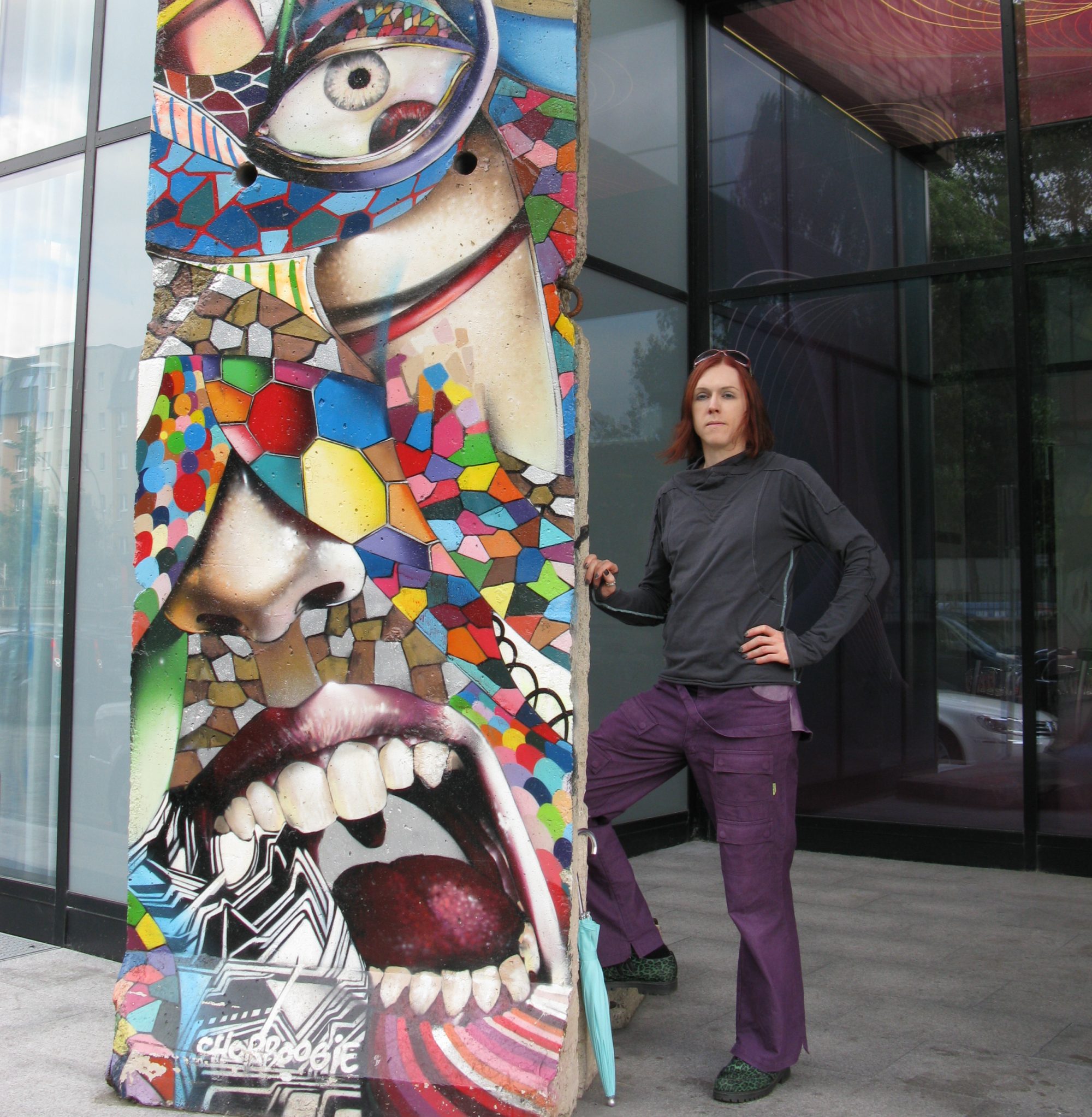I am a bad androgyne. Or maybe I’m just tired. I live in a gender-fluid soap bubble. Externally, well, there aren’t 13 moon cycles (months) and there aren’t 3+ genders either. There are, but there aren’t. So I just go-along to get-along and I don’t make much effort to correctly gender we who exude ambiguity.
I am drawn to androgyneaity, to ambiguousness, to ambivalence. Of course! I love it and I am it. But I don’t know how to articulate it within a linguistic-cultural structure which just has no concept of a gender-neutral person.
Even in Spanish, a language where all objects are routinely gendered, there is a workaround gender-neutral pronoun for persons built into the language (su/sus which can mean his, her, their and your). English has no such concept, only “it,” which denotes a thing.
I’ve experienced, but not enjoyed, being referred to as “it,” “he-she” or similar. Pronouns may get dropped altogether when an androgyne encounters a hostile or confused cis- person (suddenly, you are “a he-she” or “an it”). Or pronouns may get imbued with a hostile emphasis, “Did you see HIS dress?” or “Did you see ITS makeup?”
The new linguistic concepts of cis- and trans- have gained traction and that is great (cis-man, trans-man, cis-woman, trans-woman), but doesn’t really solve the problem of the gender binary for line-striders like me.
When thoughtful queer people, or cis allies, sensitively and sincerely ask me what gender pronouns I prefer, I’m at a loss. A mix? Choose your own gender-neutral pronoun set? Plural neutral (they/them/their)?
I can’t even articulate my own gender within the constraints of everyday English language. Bad androgyne.
I don’t bother to correct the many who refer to me as “he” and I often go by my given name, always calculating how much hassle it would be in a particular situation to go by my preferred androgyne name. I don’t think of myself as having a gender, and I am flustered that everyone else is so hung up on it.
I sometimes think I don’t really have a name, just sticky labels for other people’s convenience. I certainly don’t feel I “am” a particular name.
I began crossing gender when I was 17. I should clarify that I began determinedly crossing it at that point (before that, I was just drifting). That was late 1995 and it was a struggle. At the time, I was certain the world would’ve changed by now and fighting to be myself would’ve paid off. It has and it hasn’t.
I appreciate that Trans Rights is a thing now (& substantial part of LGBTQ groups) and that gender queerness has a foothold in the culture. However, androgynaeity or freedom from gender norms hasn’t made its way into most government forms, nor into mainstream culture.
Sexism remains utterly rampant, even if it’s gone under the covers like racism mostly has, avoiding the use of egregious slurs while still coloring everyday interactions like a paint factory explosion. I can’t envision an androgynous-friendly future until we kick to the curb this two-class gender system.
I don’t bother to correct people who misgender me or use the wrong name. I get uncomfortable when people assume I’m a cis-woman just from my assumption that they would be uncomfortable upon finding out that I’m not a cis-woman. I am a bad androgyne.
I usually don’t, but sometimes accidentally and carelessly misgender trans people I know (I know! it should be so easy with trans folks who broadcast their chosen gender). I forget to ask my ambiguous friends their gender preference and/or casually cis-gender them. Ugh! I am a bad androgyne.
It’s not that I want to embrace or even accept the binary (cis)gender world. It’s just that I think it’s all pretend and maybe not important enough to keep fighting. Binary gender is largely invented (non-hegemonic, biased and ignorant of biological intersexes), but so are non-binary genders. It’s just hard because the delusions are so demanding & pervasive on the binary side of things.

Regarding “rampant sexism,” in reading March 2016 issue of Wired magazine, I noticed that the majority of human images are men (in the first 32 pages, I counted 24 men vs. only 8 women; that’s 75% men) and the majority (all?) of the interviews are men (especially 2 long articles on John Mininno and Andy Rubin) and it appears that most of the art and articles are by men as well (though the article authorship is harder to glean due to a number of ambiguous/androgynous names).
My favorite part was an interview with a cartoonist (male with a male protagonist, of course) and he says he likes science fiction, elaborating, “I like Phillip K. Dick and all the obvious guys.” As if there aren’t any sci-fi women authors even worthy of considering (no Octavia Butler, Nancy Kress, Ursula K. Le Guin). This is in 2016!